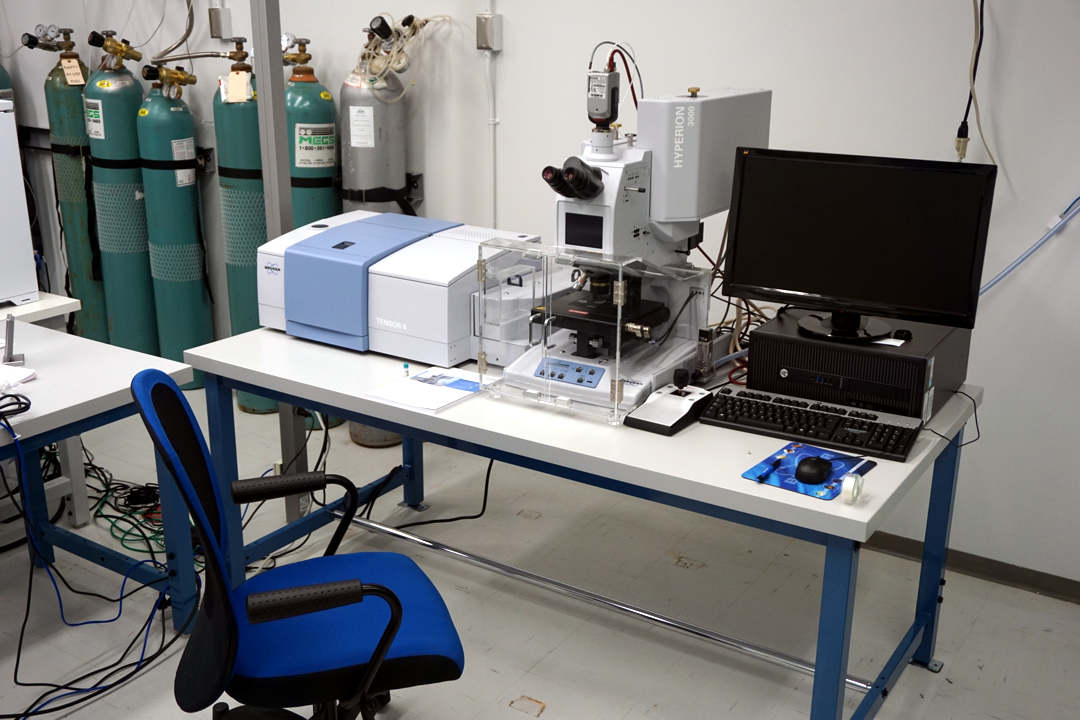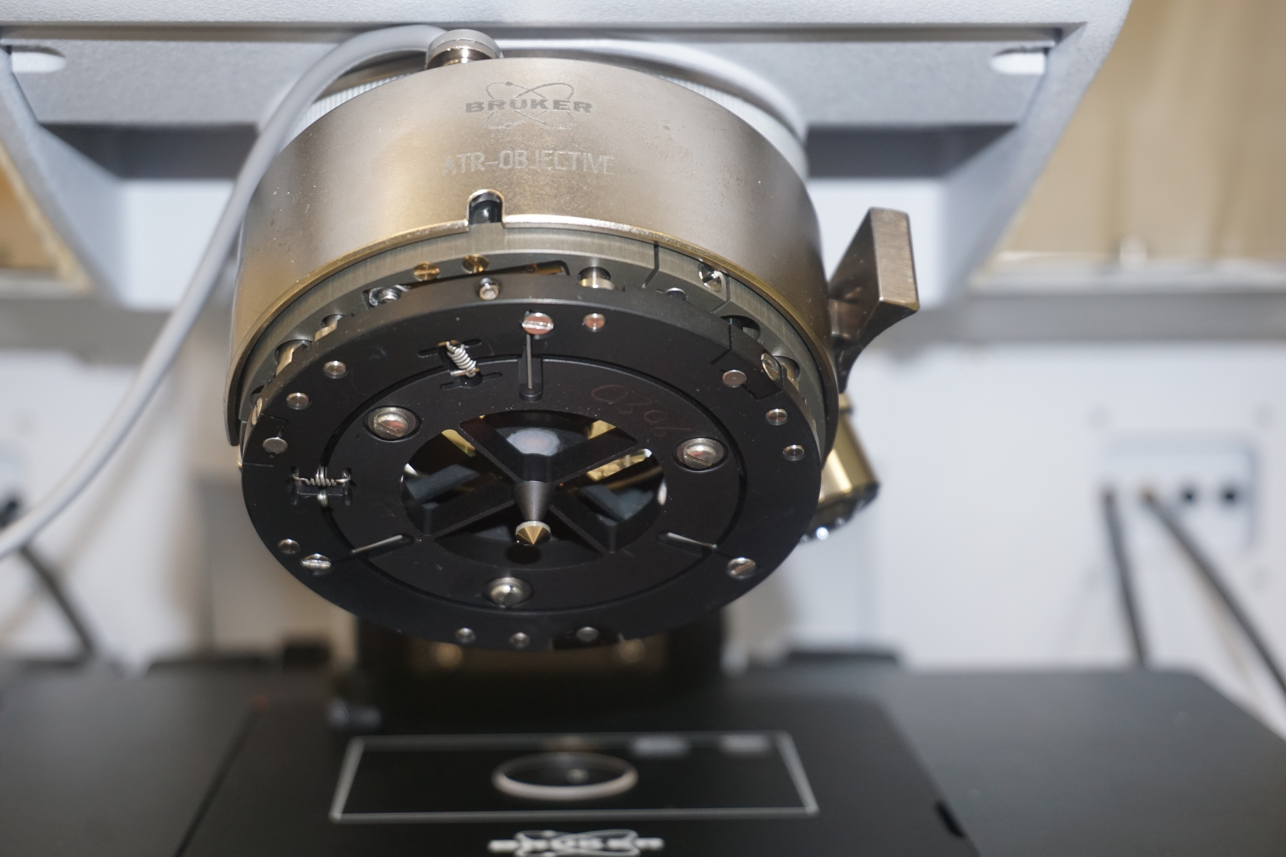micro-FTIR
Micro-Fourier Transform Infrared Spectrometer

The lab consists of a Bruker Tensor II Infrared Spectrometer attached to a Bruker Hyperion 3000 Infrared Microscope equipped with single element mid and broad band liquid nitrogen cooled MCT detectors and a 64×64 element Focal Plane Array (FPA) detector. In addition, an Attenuated Total Reflectance (ATR) objective with Ge crystal is also available. The laboratory is optimized for the analysis of small samples, and recently proposed methods are currently being tested for the determination of CO2 and H2O concentrations in silicate glasses and silicate melt inclusions without the need of doubly polished sections. Additional accessories include: 15X and 36X condenser and objective lenses and a Linkam FTIR600 heating-freezing stage. The FPA detector allows rapid mapping of the spatial distribution of IR active molecular species in a large variety of materials.
Key accessories
Focal Plane Array detector
The FPA detector contains an array of 64X64 MCT detector elements and therefore allows rapid image acquisition based on any part of the collected spectra. Therefore, the spatial distribution of IR active molecular species in the sample can be rapidly mapped. For example, one geological application is the mapping of the distribution of dissolved water and CO2 in silicate glasses in volcanic rocks to constrain eruption dynamics.
Attenuated Total Reflectance Objective
The Attenuated Total Reflectance Objective allows highly-reproducible reflectance measurements on thick samples as the evanescent wave penetrates the sample only about 1 micron deep. It also increases spatial resolution by a factor of four. Imaging with the FPA detector through the ATR objective is also possible. This way, the spatial resolution can be increased beyond the diffraction limit imposed by the wavelength of the light. Bruker’s ATR objective also functions as a regular 20X objective lens allowing precise positioning of the sample before lowering the ATR crystal into the path of light along a precise guiding column mechanism. Various pressure settings are available to ensure optimal contact between the Germanium ATR crystal and the sample surface. The crystal tip is 100 microns in diameter, but spectra with good signal to noise can be obtained from areas smaller than 10 microns in diameter. For example, the ATR method allows the determination of dissolved water and CO2 concentrations in silicate melt inclusions which are exposed only on one side to the sample surface.

Image of the ATR objective with the conical germanium crystal in the center.



